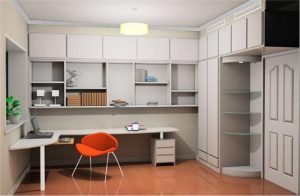Nail holding capacity: the core indicator of wood material connection performance
In building structures, furniture engineering and wood craftsmanship, nail holding capacity is the core parameter for evaluating the mechanical properties of wood and wood-based panels, and directly determines the stability and long-term durability of the connection structure. This indicator reflects the mechanical bite strength between the substrate and the fastener by quantifying the axial pull-out force of the material on the nail body/screw (unit: N or kN).
Importance of nail holding force
In practical applications, nail holding force determines whether the structure is firm, especially in the following situations:
Joint points in furniture assembly;
Fixation of frame structure and wall in construction;
Connection with keel during floor installation;
Situations where multiple disassembly or repeated nailing is required in DIY woodworking projects.
If the nail holding force of the board is insufficient, the nails are easy to loosen or even fall off, causing safety hazards or affecting the service life.
Analysis of common boards and their nail holding ability
1.Solid Wood
Features:
*Natural material with natural texture;
*High density and complete fiber structure;
*Sandable and repairable.
Nail holding ability:
Solid wood has strong nail holding force, especially the cross-grain direction is better than the longitudinal direction. Due to its dense and continuous fiber structure, it can provide good pull-out resistance and shear resistance.
Applicable scenarios:
High-end furniture, door and window frames, stairs, floors and other occasions that require high-strength connections.
2.Particle Board
Features:
*Low cost;
*Flat surface, suitable for veneer;
*Easy to absorb water and swell;
*Loose internal structure.
Nail holding ability:
Particle board has weak nail holding force, especially the edges are more prone to cracking or nail slipping. Therefore, it is often necessary to pre-drill holes and use screws instead of ordinary nails when using it.
Applicable scenarios:
Economic furniture, cabinet internal structure, non-load-bearing parts
3.Medium Density Fiberboard (MDF)
Features:
*Uniform material, good processing performance;
*Strong hygroscopicity;
*Easy to carve and mill;
*Lower strength than solid wood and particleboard.
Nail holding ability:
MDF has average nail holding power, especially in the edge area. Slightly better than particleboard, but it is still recommended to use self-tapping screws or embedded nuts to enhance the connection strength.
Applicable scenarios:
Display cabinets, interior decorative lines, speaker cabinets, products that require fine surface processing.
4.Plywood
Features:
*Layered structure, anisotropy;
*Strong deformation resistance;
Good moisture resistance (depending on the type of glue);
Higher strength and toughness.
Nail holding ability:
Plywood has relatively good nail holding power, especially when nailed perpendicular to the lamination direction. Due to its multi-layer staggered structure, it can effectively prevent cracking.
Applicable scenarios:
Formwork, scaffolding platform, outdoor furniture, shipbuilding, structural support, etc.
Key factors affecting the nail holding ability of plywood
Number of layers and direction
Plywood is made of multiple layers of veneer (wood chips) cross-laminated (adjacent layers have vertical wood grain). This structure enhances isotropy, but the nail holding ability may vary depending on the direction of nailing:
Side (edge): When nailing into the joint between layers, the nail holding force is weak (may loosen due to the separation of the interlayer glue surface).
Surface (board surface): When nailing into the veneer layer (along the wood grain direction), the nail holding force is strong (similar to solid wood).
Optimization suggestion: Nail from the board surface first to avoid applying force perpendicular to the interlayer direction.
Material density and type
High-density wood (such as birch and hardwood plywood) usually has better nail holding force than low-density wood (such as pine).
The quality of the surface veneer directly affects the gripping ability of the nail.
Adhesive quality
Poor-quality glue can easily cause cracking between layers and reduce the stability of nail holding. Plywood with waterproof glue (such as phenolic resin) has a more stable structure and is suitable for humid environments.
Thickness and number of layers
Thicker plywood (e.g. 18mm or more) can provide deeper nail embedment depth and enhance nail holding power, but too many layers may reduce overall strength due to the high proportion of glue layers.
Type of nail/screw
Screw: The thread design provides stronger pull-out resistance than ordinary nails, especially self-tapping screws.
Ring nail or threaded nail: The surface concave and convex structure increases friction.
Pre-drilled holes: Reduce the risk of cracking of the board, but the hole diameter needs to be slightly smaller than the screw diameter to ensure grip.
5.OSB (Oriented Strand Board)
Features:
High strength, similar to plywood;
Rough surface;
Good moisture resistance;
Moderate cost.
Nail holding ability:
OSB has strong nail holding force and is suitable for heavy structural connections. Its directional wood chips provide good mechanical properties, especially suitable for wall, roof and floor base.
Applicable scenarios:
Building structural panels, packaging boxes, temporary buildings, container floors, etc.
Summarize
| Type | Nail holding force | Advantage | Shortcoming | Uses |
| Solid Wood | better | High strength and durability | High cost and easy to deform | High-end furniture, building structures |
| Particle Board | worse | Low cost and easy processing | Poor nail holding force, easy to absorb water | Economical furniture |
| MDF | medium to weak | Smooth surface, easy to process | Low strength, not moisture resistant | Interior decoration, display cabinet |
| Plywood | medium to strong | Stable structure, anti-deformation | High surface treatment requirements | Building formwork, outdoor furniture |
| OSB | better | High strength, moderate cost | Rough surface | Building structure, packaging |

